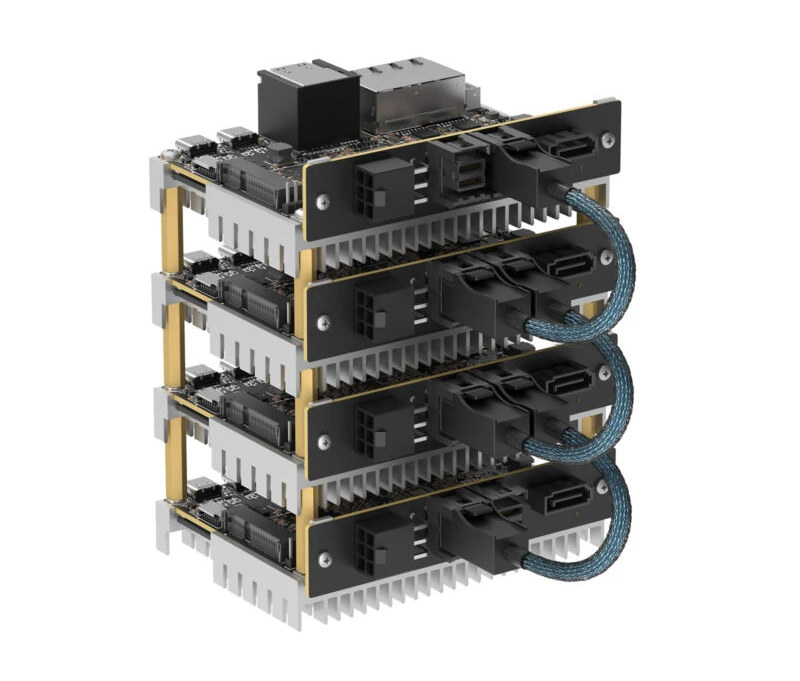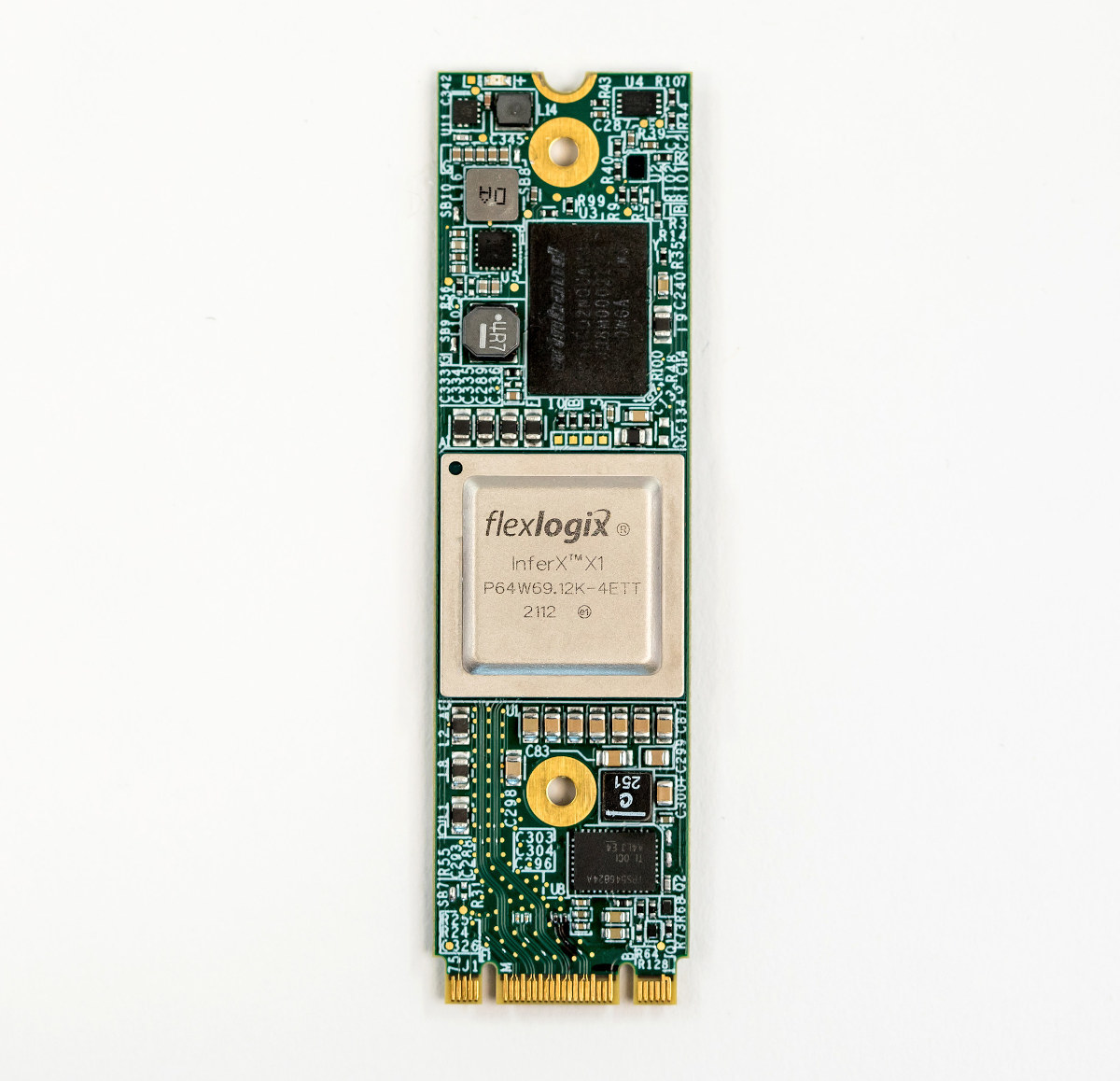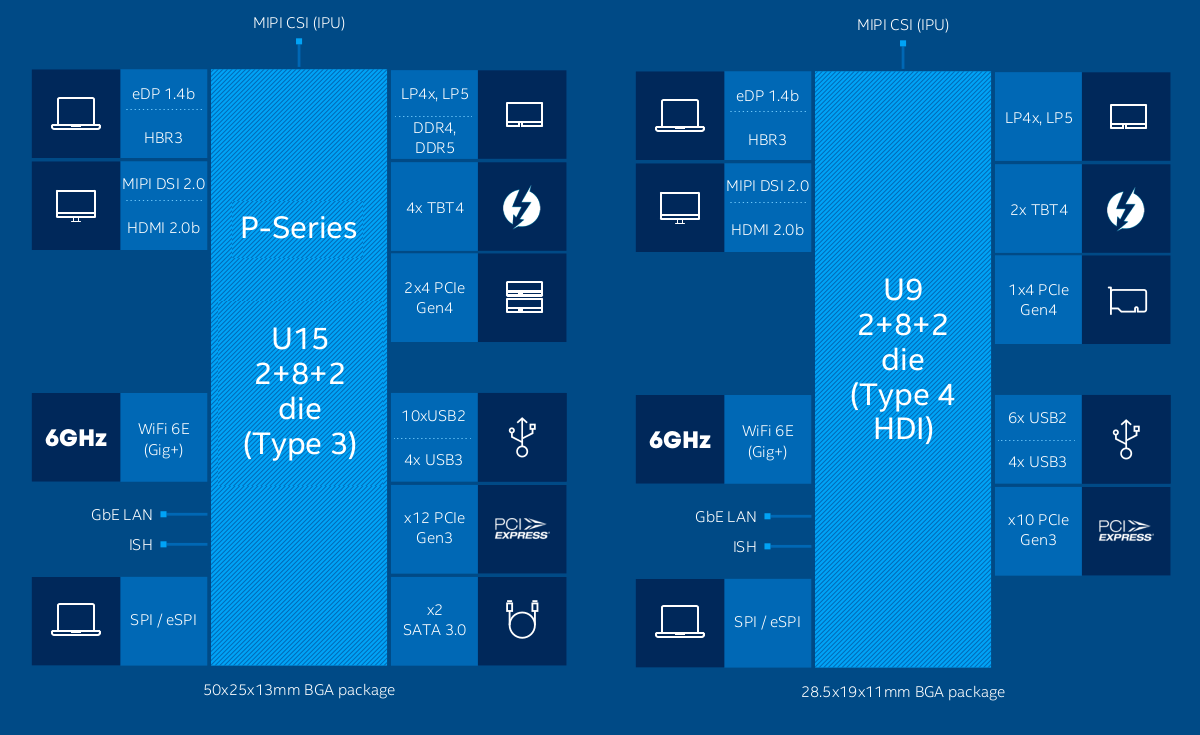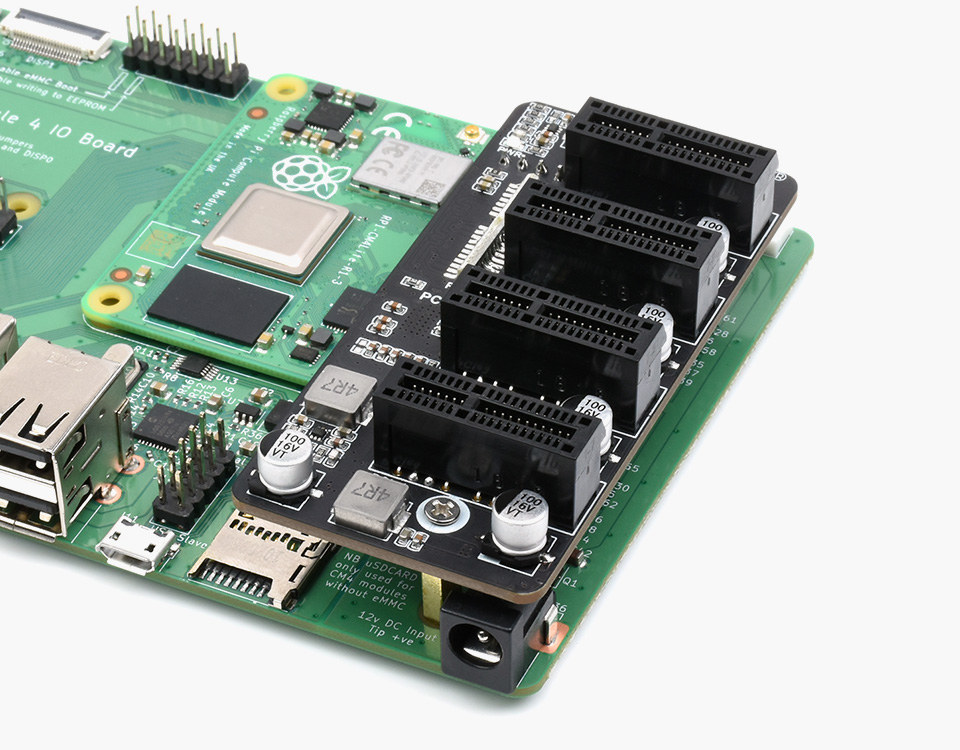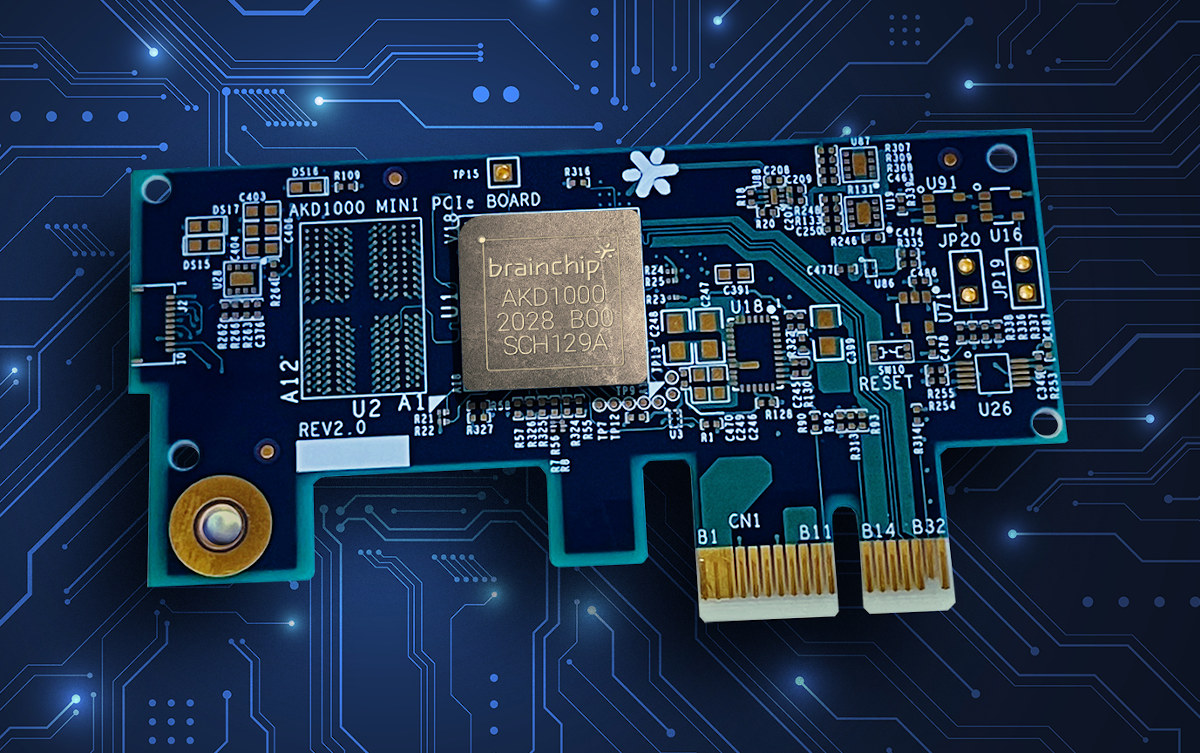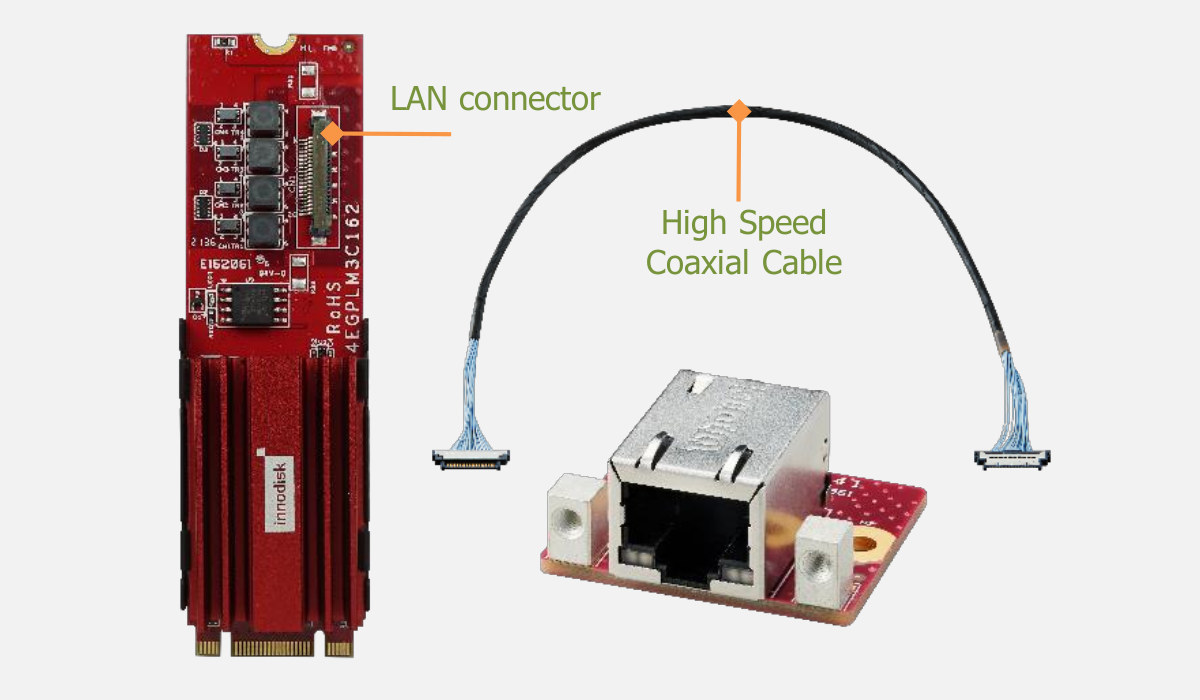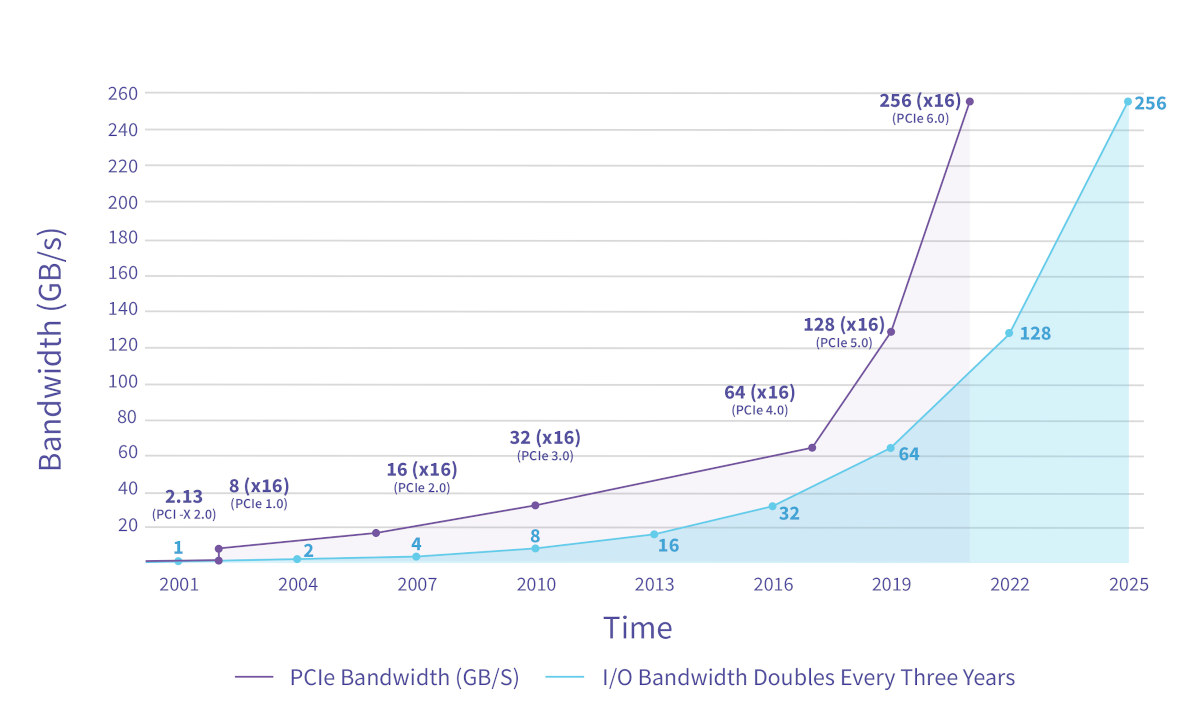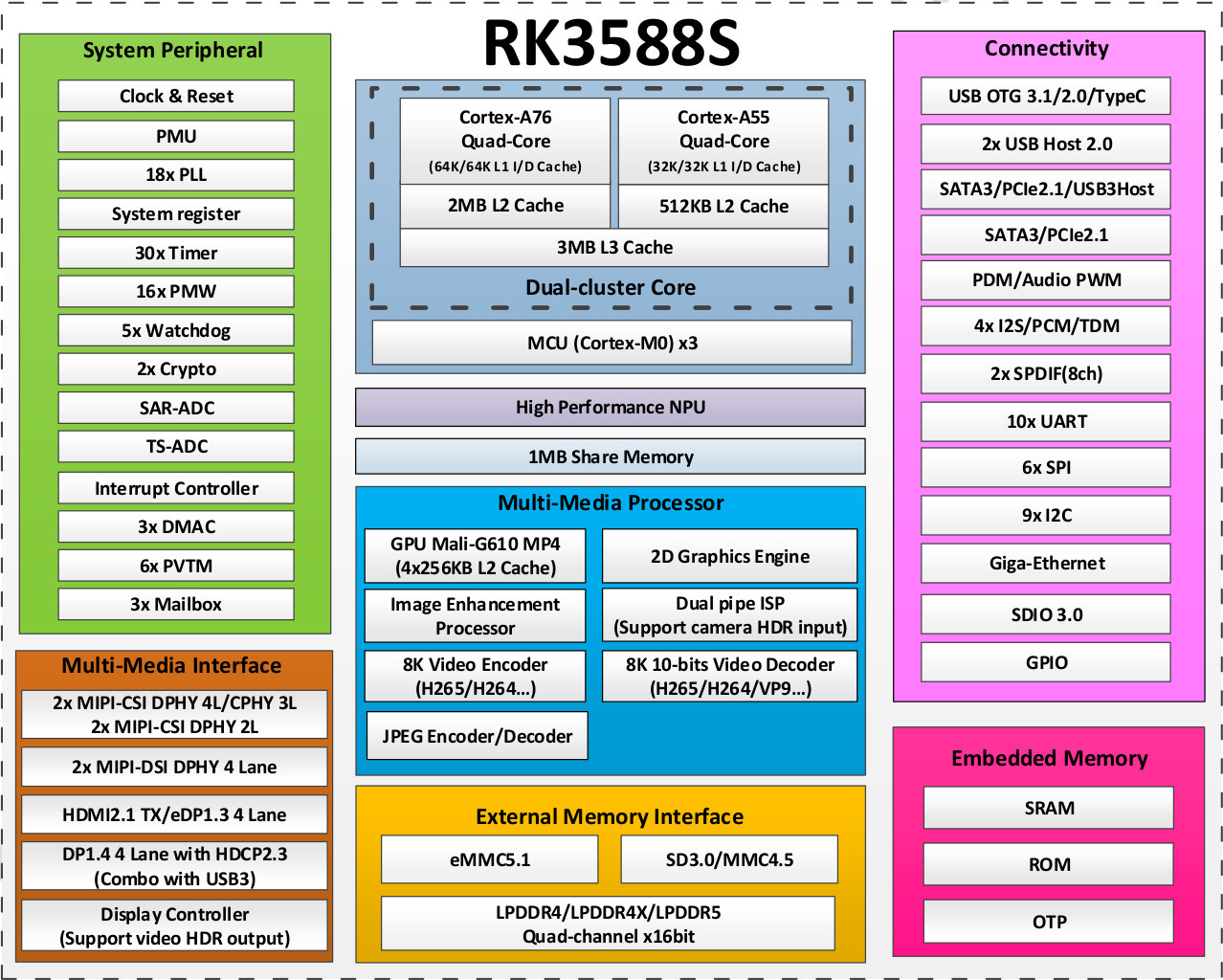Mixtile Blade 3 is a Rockchip RK3588 SBC with up to 32GB RAM designed for server applications, notably to build clusters through a U.2 edge connector with 4-lane PCIe Gen3, SATA 3.0 to interconnect multiple boards. What was not clear so far is how multiple boards would be connected, as we were just shown two boards connected by a U.2 cable, which does not scale, and does not provide power as the 12V input also comes with the U.2 connector. The company has now provided more details showing how it’s done, namely through a breakout board that connects to the U.2 edge connector, and allows cluster design as shown below. The U.2 breakout board comes with a 6-pin connector 12V power, pair of SFF-8643 (mini SAS) connectors for PCIe daisy-chaining, and a SATA port. Since short SFF-8643 cables are hard to find, Mixtile will provide custom 15-cm cables with the […]
Flex Logix InferX X1M M.2 AI accelerator module is now in production
When we first wrote about Flex Logix InferX X1 AI inference accelerator in 2020, the InfexX X1M M.2 AI accelerator module for edge servers, PCs, laptops, and embedded systems. was expected in Q2 2021. It took longer than planned but the company has finally announced production availability of the InferX X1M board in M.2 2280 form factor, or about the size of a stick of gum, to fit into power-constrained applications such as robotic vision, industrial, security, and retail analytics. InferX X1M module specifications: InferX X1 Edge Inference Accelerator with 4K MACs with 8 MB of distributed SRAM, and an eFPGA with 4MB DDR3 RAM System Memory – LPDDR4X (capacity undisclosed) Interface – M.2 B+M Key edge connector with x4 PCIe GEN3/4 Dimensions – 22mm x 80mm Power Budget – 6 to 8.2W TDP Flex Logix does not provide a lot of information on the product page, and instead, it’s […]
Intel launches Alder Lake P-Series and U-Series mobile hybrid processors
Intel first unveiled the most powerful Alder Lake H-Series last year before the launch in January, and also introduced Alder Lake-S desktop IoT processors and Alder Lake U-Series and P-Series mobile IoT SoCs in early January. But now the company has announced the launch of the Alder Lake P-Series (28W) and U-Series (9W and 15 PBP) 12th generation mobile processors designed for “thin-and-light” laptops which should become available around March 2022. The block diagram of the 28W P-Series and 15W U-Series (source: product brief from Intel) shows both offer the same interfaces including eDP 1.4b, HDMI 2.0b, 2x PCIe Gen4, 12x PCIe Gen3, 2x SATA… and the same 50x25x12mm BGA package. But the 9W U-Series comes in a cost-optimized 28.5x19x11mm BGA package that does without SATA interfaces, a lower number of PCIe Gen3 interfaces (10 vs 12), USB 2.0 interfaces (6 vs 10), Thunderbolt 4 interfaces (2 vs 4), and […]
Add four PCIe x1 slots to Raspberry Pi CM4 IO with Waveshare PCIe-Packet-Switch-4P board
The 1-lane PCIe Gen 2 interface in Broadcom BCM2711 processor is exposed in Raspberry Pi CM4, and most carrier boards are exploiting the interface including the official Raspberry Pi Compute Module IO carrier board. But if you ever wanted to connect multiple PCIe cards to the CM4 IO board, Waveshare has got you covered with the PCIe-Packet-Switch-4P that provides four PCIe x1 slots through an ASMedia ASM1184e PCIe switch. PCIe-Packet-Switch-4P expansion board specifications: Compatible with Raspberry Pi Compute module 4 IO board 4x PCIe Gen 2 x1 expansion slots, compatible with PCIe Gen 1 x1 ASM1184e PCIe switch taking 1x PCIe x1 Gen2 upstream port to 4x PCIe x1 Gen2 downstream ports; no driver required, plug and play Power Supply 12V via PCIe interface or 12V via DC jack (or even 5V see warnings below) Dimensions – 82 x 39 mm There are some interesting warnings in the Chinese […]
$499 BrainChip AKD1000 PCIe board enables AI inference and training at the edge
BrainChip has announced the availability of the Akida AKD1000 (mini) PCIe boards based on the company’s neuromorphic processor of the same name and relying on spiking neural networks (SNN) which to deliver real-time inference in a way that is much more efficient than “traditional” AI chips based on CNN (convolutional neural network) technology. The mini PCIe card was previously found in development kits based on Raspberry Pi or an Intel (x86) mini PC to let partners, large enterprises, and OEMs evaluate the Akida AKD1000 chip. The news is today is simply that the card can easily be purchased in single units or quantities for integration into third-party products. BrainChip AKD1000 PCIe card specifications: AI accelerator – Akida AKD1000 with Arm Cortex-M4 real-time core @ 300MHz System Memory – 256Mbit x 16 bytes LPDDR4 SDRAM @ 2400MT/s Storage – Quad SPI 128Mb NOR flash @ 12.5MHz Host interface – 5GT/s PCI […]
Add 10GbE to your system with an M.2 2280 module
It’s now possible to add 10GbE through an M.2 socket thanks to Innodisk EGPL-T101 M.2 2280 module based on Marvell AQtion Ethernet controller offering support for 10Gbps, 5Gbps, 2.5Gbps, 1000M, and 100M/10M LAN speeds. The solution is comprised of three parts with the M.2 module equipped with a heatsink to cool the Ethernet controller, a flexible high-speed cable, and a daughter board with an RJ45 connector and two threads for mounting to a chassis. Innodisk EGPL-T101 specifications: Ethernet controller – Marvell AQtion likely AQC113 “single-port 6speed, 10Gbps PCIe to Multi-Gig Ethernet controller with MAC and PHY with I-grade support” M.2 input interface – PCI Express 3.0 x 2 RJ45 connector for up to 10GbE Power Consumption – Up to 2.5W (3.3V, 762mA) Dimensions (W x L x H/mm) M.2 Board: 22 x 80 x 14.5 mm (M.2 2280 form factor) Daughter Board: 31.75 x 28 x 17.7 mm Temperature Range […]
PCIe 6.0 delivers up to 256 GB/s for Big Data applications
The PCI-SIG has just released the PCIe 6.0 specification reaching 64 GT/s transfer speeds, or 256GB/s, doubling the PCIe 5.0 specification data rate, and aimed at Big Data applications in the data center, artificial intelligence/machine learning, HPC, automotive, IoT, and military/aerospace sectors. PCIe 6.0 follows PCIe 5.0 announced in 2019 and can achieve the 256GB/s data rate in a 16-lane configuration. Implementation will take time, as even PCIe 5.0 is not widely used yet, and in the embedded space, I only found PCIe 5.0 in the recently announced Alder Lake-S Desktop IoT processors, with the Alder Lake Mobile IoT processors still being limited to PCIe 4.0. PCIe 6.0 highlights: 64 GT/s raw data rate and up to 256 GB/s via x16 configuration Pulse Amplitude Modulation with 4 levels (PAM4) signaling, leveraging existing PAM4 already available in the industry Lightweight Forward Error Correct (FEC) and Cyclic Redundancy Check (CRC) mitigate the […]
Rockchip RK3588S cost-optimized Cortex-A76/A55 processor adds CAN bus, drops PCIe 3.0, other peripherals
Rockchip RK3588S is a cost-optimized version of the RK3588 octa-core Cortex-A76/A55 processor with fewer peripherals, and I’ve been told it’s been designed for tablets, but as we’ll see below, the processor will probably find its way into many other applications. We first saw RK3588S during the Rockchip Developer Event last December, but at the time we did not have any information, except it would be a lower-cost version. I’ve now received an RK3588S datasheet, so let’s have a look at the block diagram and specifications to find out what’s different. Rockchip RK3588S specifications with highlights in bold showing the differences against RK3588: CPU – 4x Cortex-A76 and 4x Cortex-A55 cores in dynamIQ configuration GPU Arm Mali-G610 MP4 “Odin” GPU with support for OpenGLES 1.1, 2.0, and 3.2, OpenCL up to 2.2 and Vulkan1.2 2D graphics engine up to 8192×8192 source, 4096×4096 destination AI Accelerator – 6 TOPS NPU 3.0 (Neural […]


